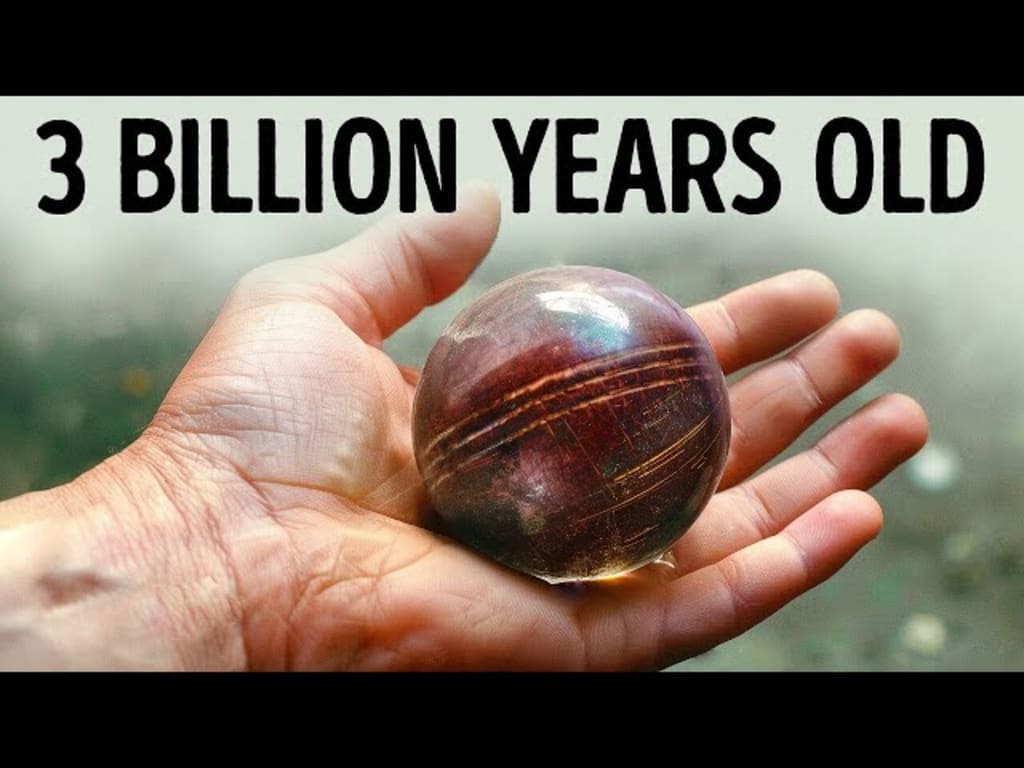Unbelievable Discoveries That Could Rewrite History
Ancient Artifacts and Mysteries Unearthed

Have you ever seen cricket balls that are 3 billion years old? The Klerksdorp spheres, found in deposits of the mineral pyrophyllite in South Africa, have indeed rocked the science world. These spheres resemble tiny ancient cricket balls with seam-like lines around the middle. In the 1980s, some claimed these spheres were made by an advanced pre-flood civilization we know nothing about. One museum curator even shared stories about how they rotated on their own in a display case. A TV show once invited a psychic who declared the spheres were pieces of an ancient spaceship.
However, according to geologists, these spheres are common concretions, or spherical objects formed by different minerals than the surrounding rock. The seam-like lines are just imprints from the host rock's layers building up over time. The Klerksdorp spheres come in various shapes, from noticeably flattened spheres to distinct discs. As for the episode when one of these spheres spun on its own, the curator of the Klerksdorp Museum explained that when he placed a sphere on its glass shelf during a journalist's visit, it naturally rotated a bit because it's round. The area around the museum often experiences earth tremors from nearby gold mining activities.
The oldest known human-like footprints, possibly 6 million years old, were found on the Greek island of Crete in 2002. If accurate, this discovery suggests that early human ancestors may have migrated between Europe and Africa much earlier than previously thought. This doesn't mean Africa is not the cradle of humankind; it could simply prove that early human ancestors moved back and forth between continents. Some researchers believe the footprints were left by a bipedal creature possibly related to an early human ancestor nicknamed El Graeco. According to scientists who studied them, the footprints have a very human-like shape with five toes and a parallel big toe. While some scientists are skeptical, suggesting the prints might be from a late European ape, a new study analyzing fossilized marine microorganisms in the sedimentary rocks confirmed the footprints are indeed 6 million years old.
Another amazing find is the Dorchester pot, a beautifully crafted metal vessel with fancy geometric designs embossed in shiny silver. Discovered in Dorchester in 1852 under unusual circumstances, the pot was originally embedded within a rock or boulder known as pudding stone, dated to be around 500 million years old. This could imply the pot itself is also that old. However, a more current theory suggests the Dorchester pot is a Victorian-era candlestick holder, a popular household item at the time. This artifact falls into the category of OOPArts, or out-of-place artifacts, which are objects that seem too advanced for the time period they supposedly come from. If we accept that the pot is 500 million years old, its creators were extraordinarily advanced in crafts and technology. Adding to the mystery, the pot has an engraving of a plant that likely disappeared from Earth over 100,000 years ago, suggesting it might indeed be ancient.
The oldest map in Europe is a 4,000-year-old stone slab found in France in 1900. Known as the Saint-Bélec slab, it was discovered at an ancient burial ground. The carvings on the slab show in three dimensions the river network with an accuracy of around 80% over an 18-kilometer stretch. There are other stone-carved maps worldwide, but this one is unique for depicting a specific area to scale. The slab's carvings likely map rivers, hills, settlements, burial sites, and field systems. Archaeologists believe the slab wasn't used for navigation but symbolized power, illustrating the domain of a local ruler. After the ruler lost power, the slab was repurposed for a burial vault. The unique artifact was stored in a museum cellar for decades until scholars, intrigued by older reports, conducted a detailed analysis using 3D techniques. Their research confirmed that the slab's creators not only etched lines into the rock but also modified its surface to reflect the landscape's topography with high accuracy.
The Salzburg Cube, also known as the Wolfsegg Iron, was discovered in the late 19th century in Austria. Despite its name, the object is more rounded with two flat sides and a groove down the middle, covered with pits and craters. Some people believe it might be something extraterrestrial. Workers found the artifact while blowing apart a piece of coal, which was over 60 million years old. The cube mysteriously vanished from museums in the early 20th century, reappeared, and then disappeared again. A professor suggested it might be from a meteor, but no evidence of typical meteorite elements was found. Researchers then theorized it could be a human-made object, possibly a Victorian-era candlestick holder, but its true story and current location remain unknown.
The Meister Print, a fossilized sandal print discovered in 1968, has sparked much intrigue. Inside the print was a trilobite, an organism believed to have gone extinct around 500 million years before humans existed. Many historians think this age is an exaggeration. When Meister found the fossil, it was authenticated, but the scientist only confirmed the presence of a trilobite, not a human sandal print. Another scientist found a 6-inch impression he believed was from a child's moccasin, but the footwear seemed new. Could this be evidence of time travel, proof that humans existed millions of years earlier than thought, or a sign that someone else visited early Earth? Or is it just a rock formation that looks like a sandal print? We still don't have the answers.
In June 1936, a couple walking along Red Creek in London, Texas, stumbled upon something unusual: a piece of wood sticking out of what seemed to be an ancient rock formation. About ten years later, their curious son cracked open the rock to see what was inside and found a hammer that looked surprisingly modern. One enthusiast later suggested that the rock encasing the hammer was from the Cretaceous period, meaning someone dropped a 19th-century hammer while dinosaurs roamed the Earth. If true, this would overturn evolutionary theory. However, the real answer is simpler: the hammer is modern, and geological processes encased it in rock. Minerals can harden around an object quickly, so the hammer was probably dropped by a miner a century ago, and the rock formed around it afterward.
That's it for today! If your curiosity is pacified, give this a like and share it with your friends.
About the Creator
Enjoyed the story? Support the Creator.
Subscribe for free to receive all their stories in your feed. You could also pledge your support or give them a one-off tip, letting them know you appreciate their work.





Comments
There are no comments for this story
Be the first to respond and start the conversation.